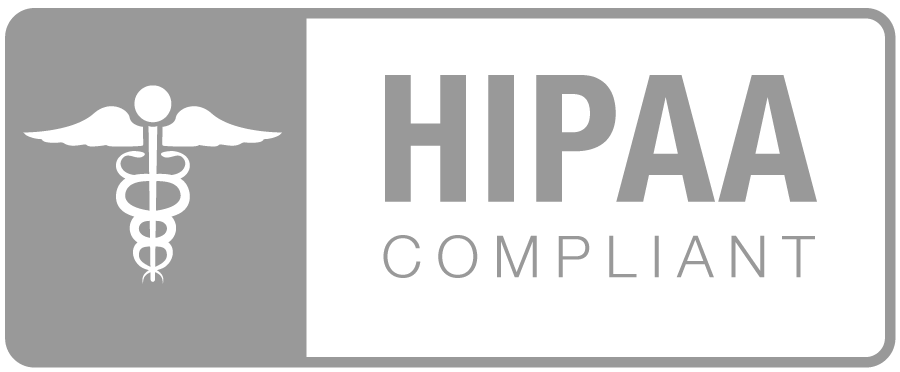NOTE: The following article is in no way meant to be a replacement for formal, in-person training on mental health first aid.
Welcome back to our Gatekeeping for Faith Leaders series! If for some reason you missed our first two installments, I highly encourage you to begin by reading Part 1, How do I know When to Refer Someone to Counseling, and Part 2, What is my Role after I Refer Someone to Counseling?
Do not be fooled by the order of these installments. Safety in crisis situations, despite it being the metaphorical caboose of this discussion, is probably the most important of the three topics. I intentionally left it for last to make sure that we had fully discussed the roles and relationships between the mental health and faith leader communities prior to discussing crisis situations. Why? Well, the last thing I want to happen to someone reading this article is for them to assume that we in the mental health field expect you to take on tasks for which you have not been trained or prepared.
So please, hear my plea and read installments 1 and 2 before delving into this topic of Safety.
____________________________________________
The Importance of Gatekeeping in a Crisis
A year or two into my counseling training, I was out of town visiting a small church, and a teenager came forward at the end of service for prayers. It was a Sunday night with sparse attendance. The usual prayer was said on his behalf before dismissal, and everyone went their separate ways. Within minutes, my father found me and asked me if I was comfortable talking to this young adult who had expressed some suicidal ideation, as there was no one else available trained on the topic.
First, I was floored. I was green to the counseling world and did not even have a degree in it yet, much less a license. Thankfully I had just recently completed my crisis counseling class and had role-played this scenario what felt like hundreds of times. I did have some experience working with teenagers with suicidal ideation in the inpatient hospital where I was currently employed, but all of these scenarios were under strict and appropriate supervision.
Surely I am not the only one here, I thought. This cannot be happening.
But my second train of thinking was, if not me, who?
It absolutely frightens me to think of how often this scenario could be happening in our churches. I praise God that this teen chose to share his thoughts in a safe space—that act of courage still brings tears to my eyes– but how safe was the space, really, if no one was trained in helping him seek further professional care?
Research on this topic concludes that gatekeeping training in religious settings is a very strong protective factor for suicidality, especially since many individuals speak with close friends and family prior to dying
by suicide. For many people, the church is an important line of defense. But faith leaders must know what to do [3,4,8].
Some things to consider:
When I spoke with this individual that evening, I did not pretend to be his therapist—that was not my role. I didn’t pretend to be his parent or guardian, either, but after chatting with him I made sure they were fully in the loop. I used skills that I had learned to assess the situation in the moment, decide how to address his current state, and ensure that follow-up care was obtained.
In a very serious case, follow-up care could have looked like calling a hotline with him, calling 911, or driving him to the emergency room. Thankfully the most appropriate steps for him were to be closely observed by a family member who would assist him with speaking to a professional immediately the next day.
____________________________________________
I was no hero that evening. I just happened to be someone who knew how to ask a few questions and take action according to the answers. Gatekeeping is just that: a way of leading someone to the next, most appropriate step. These scenarios can feel nerve-wracking, and in our fear and great care for someone we can often get caught up in details that keep us from being immediate in making sure the next connections to professional care are made.
Think of this role like being trained in CPR: you are on the scene until a professional arrives or the person can get to a professional with your help.
Whether you have been trained to respond or not, these scenarios will absolutely arise. And honestly, I hope that they do—because it is a fact that people are struggling with mental health concerns in droves–and I would rather the people in our church communities reach out to you than suffer in silence. When they reach out and you are trained in gatekeeping, then we can work together in our revolving-door fashion to help them.
When a person seeks crisis support from faith leaders, we know that they have a built-in system of support already, and a community willing to walk with them through it.
As mentioned above, this article is not a replacement for training, but instead a call to action for you to obtain crisis training in a manner that allows you the opportunity to ask pertinent questions and hopefully role-play scenarios you may encounter. If you or your congregation would be interested in receiving specific training on this topic from ChristianWorks, we encourage you to reach out to us.
____________________________________________
Here are some various resources for Mental Health First Aid training and/or Suicide Prevention Training:
Question. Persuade. Refer
Mental Health First Aid from the National Council for Wellbeing
https://www.mentalhealthfirstaid.org/
Mental Health First Aid from Texas Health and Human Services
Some of the things that you will learn in a Mental Health First Aid Training or Suicide Prevention Training are:
– Risk factors of suicidality
– Warning signs that a person may be thinking about suicide
– How to actively engage in conversation with a person you believe could be in danger to themself.
– What questions to ask and how to respond to the answers given
– How to “triage” the situation to guide the person toward immediate, most effective care for the situation
– How to enlist help from the individual’s support system
– What crisis resources exist in your area
Some quick tips that have helped me (I cannot stress enough that this is not a replacement for training): – If you are unsure of what to do or the situation feels out of control, call a 24/7 hotline or 911. I have used this rule of thumb both in the counseling room and as a layperson. Often an individual will not want to call on their own, but you can offer to do it for them and talk on speakerphone. This keeps you from operating in isolation to keep the person safe.
– Remember that you are the first line of defense, but not the last. You are not expected to do this singlehandedly. Just as if you were performing CPR compressions while waiting on medics, you are a critical part of care but are not expected to serve as the professional.
– Be proactive. Do not receive “I’ll call the hotline/my mom/my friend when I leave” as an acceptable answer. You will be staying with the person until they take the next step toward support or safety, whatever that step may be (full training will make sure you know what these steps are and how to assess the situation).
DFW Resources and Hotlines
National Suicide Hotline: 998
North Texas Hotline: 214-828-1000
DFPS Youth hotline: 1-800-989-6884 (call or text)
ADAPT 24/7 Mobile Crisis hotline: 866-260-8000
North Texas Behavioral Health Authority: 1-877-653-6363 or 1-214-366-9407
References:
1. American Psychiatric Association Foundation. (2018). Mental health: A guide for faith leaders.
2. American Psychiatric Association Foundation. (2018). Quick reference on Mental Health for faith leaders. Retrieved April 26, 2023, from https://www.psychiatry.org/File%20Library/Psychiatrists/Cultural-Competency/Mental_Health_Guide_Quick_Reference_Guide_2018.pdf
3. Bazley, R., Pakenham, K., & Watson, B. (2019). Perspectives on Suicide Prevention amongst members of Christian faith-based organizations. Community Mental Health Journal, 55(5), 831–839. https://doi.org/10.1007/s10597-018-0355-4
4. Bazley, R., Pakenham, K., & Watson, B. (2019, January 2). Perspectives on Suicide Prevention amongst members of Christian faith-based organizations – community mental health journal. SpringerLink. Retrieved April 25, 2023, from https://link.springer.com/article/10.1007/s10597-018-0355-4
5. 5. Mental health first aid. Mental Health First Aid. (2023, March 28). Retrieved April 20, 2023, from https://www.mentalhealthfirstaid.org/
6. Mental health first aid. Texas Health and Human Services. (n.d.). Retrieved April 25, 2023, from https://www.hhs.texas.gov/about/process-improvement/improving-services-texans/behavioral-health-services/mental-health-first-aid
7. QPR Institute . (n.d.). QPR Institute: Practical and proven suicide prevention training. QPR Institute Practical and Proven Suicide Prevention Training QPR Institute (en-US). Retrieved April 20, 2023, from http://www.QPRinstitute.com/
8. 8. Wood, D. S., Ohri, F., Hudnall, G., & Cahoon, L. (2022). Suicide gatekeeper training outcomes in educational and religious settings. Journal of Human Behavior in the Social Environment, 33(2), 225–231. https://doi.org/10.1080/10911359.2022.2049414




